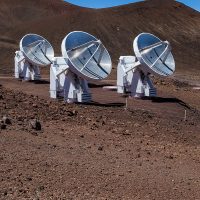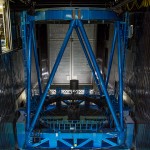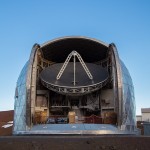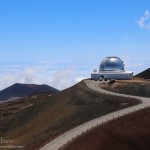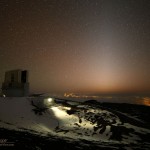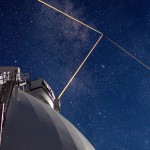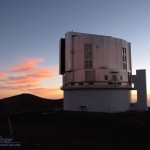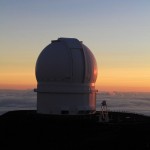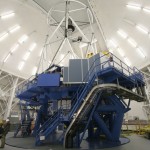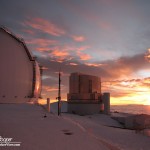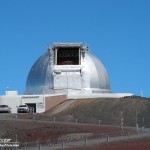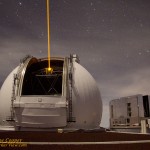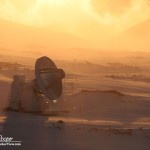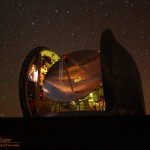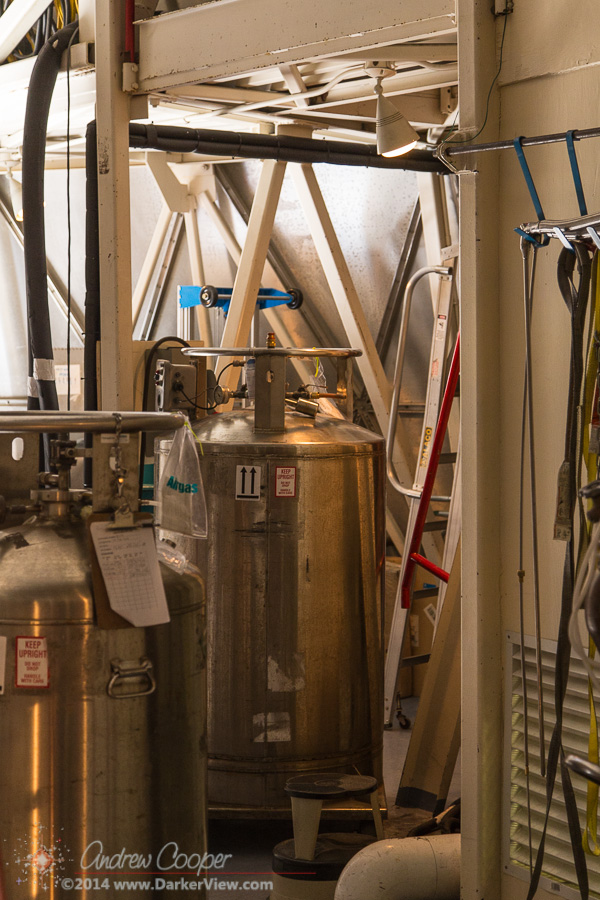Tag: observatory
NASA Honors Keck Observatory for Opening its Archive to the Public
W. M. Keck Observatory press release…
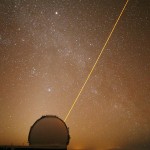
“For the past 10 years, the NASA KOA team has boosted the science value of data acquired at Keck Observatory by providing the scientific community with open access to WMKO data,” said Mario Perez, Keck Observatory Program Executive at NASA Headquarters in Washington. “They helped set a standard that all new ground based observatories are adopting. For this, the NASA KOA team has earned the NASA Group Achievement Award.”
“We are very proud of this award as well as the KOA project itself,” said Hilton Lewis, Director of W. M. Keck Observatory. “This was the brainchild of Anne Kinney while she was at NASA and who I am happy to report recently joined Keck Observatory as our Chief Scientist. Thanks to her vision, data gathered by all instruments at Keck Observatory is available for everyone to use. The Keck Observatory telescopes are the most scientifically productive on Earth, responsible for gathering data used in about 300 peer-reviewed scientific papers per year – almost one per night. There are terabytes of valuable data collected over the last 20 years waiting to be mined.”
In 2004, NASA established a partnership with WMKO to acquire large volumes of data from a single instrument, the High Resolution Spectrograph (HIRES), for NASA science purposes. It is standard practice to make data from NASA’s space telescopes available to the world in a public archive, but in 2004 it was unheard of to do the same with data from a ground-based telescope. Kinney, then Director of the Astrophysics Division at NASA Headquarters, decided to start a visionary project of promoting public access to these data, and the project began by archiving NASA-acquired HIRES data.
Continue reading “NASA Honors Keck Observatory for Opening its Archive to the Public”
Kamaʻāina Observatory Experience
One of the things the recent controversy has starkly revealed is the lack of understanding of what we do on the mountain. Myths and misunderstandings pepper the comment sections of local newspapers and echo on Facebook.

Rumor has it that Hawaii Forest and Trail will be providing the transport, a comfortable service with knowledgable guides.
Surprisingly this was announced by President Obama at the White House Star Party this week. A rather high profile announcement for a local effort.
I will probably volunteer to help out and be a tour guide when it comes Keck’s turn to host the tour.
Information can be found on the website http://www.kamaainaobservatoryexperience.org
On Time Again
So last month the observatory clocks decided is was 1995. A software bug interfered with proper decoding of the GPS time signal. For a few weeks we got by by kludging two of the old clocks together in a creative way to provide good time for the telescopes.
The new clocks are now fully online and operational. I ran one of the new time servers for a couple weeks while keeping the old time servers in place as a backup. These have now been removed, with a second new unit installed as an in-place spare.
Hopefully this will keep everything on-time for the foreseeable future. Two new precision clocks, Microsemi SyncServer S350’s, time accurate to microseconds.
Meantime there may be a fix for the old equipment, a new GPS module by Heol Design. We have one on order to try. It would be a shame to throw out these very nice clocks.
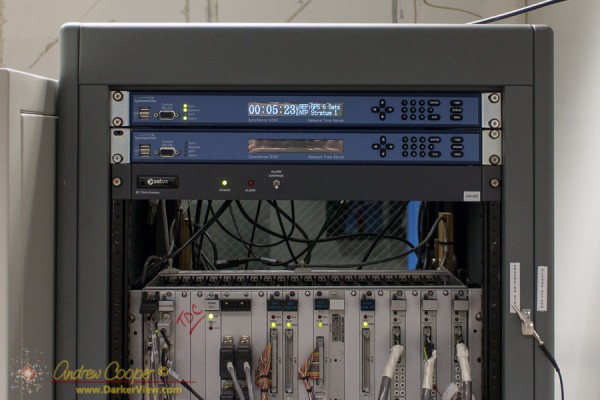
A Matter of Time
Time… It is simply a matter of time. At 00:00UT May 3rd, many of the observatory computers suddenly started reporting that the date was September 17th, 1995. To say that this created some problems is a dramatic understatement.
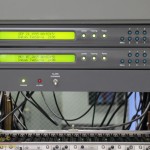
The problem came from the primary observatory clock. This clock, properly called a time server, uses GPS signals to create a time reference that is accurate to microseconds. This is made possible by referencing to the atomic clocks carried by each GPS satellite. A time server is intricately connected to the network to distribute this time. Any computer in the building can ask it for time via the NTP protocol, but that has some inaccuracy due to network delays. For equipment requiring more precise time the server distributes a hard wired time reference using the IRIG-B protocol or a 1PPS timing pulse.
Without accurate time a telescope will simply not point in the correct direction. The calculation that the computers perform must take into account our rotating planet. Feed incorrect time to that calculation and you will point to the wrong piece of sky. A few milliseconds off can result in a pointing error of arcseconds, a large error for a large telescope.
Perspectives on the Future of Mauna Kea
Here is the video of last Friday’s presentation, Perspectives on the Future of Mauna Kea. Well worth the watch for anyone interesting in the issue. My thanks to Doug Simons for representing the observatories!
If there is any complaint about the camera work… My fault.
JAC is No More
With the start of March the observatory known as JAC is no more. The Joint Astronomy Center ran two telescopes, the United Kingdom Infrared Telescope (UKIRT) and the James Clerk Maxwell Telescope (JCMT). Both telescopes have been transferred to new management and will continue to pursue science.
You can get more details on Tom Kerr’s blog A Pacific View.
I would also suggest you take a few minutes and enjoy some beautiful time-lapse to celebrate the achievements of the JAC…
Starlapse: The James Clerk Maxwell Telescope from William Montgomerie on Vimeo.
MastCam
Some parts of the job are simply fun. Installing the various upgrades to the weather system has been just that. The latest piece of kit being more fun than usual.

Even that is topped by the camera I installed this fall. The latest camera is a new pan-tilt-zoom camera attached to the weather mast.
The camera does have more prosaic reasons to justify the effort of installing it. With the camera the operators can observe the weather conditions around the telescope, observing supervisors can view the ice and snow on the domes from Waimea, the day crew can check the weather conditions before driving to the summit, and more. The camera does have enough sensitivity to see the brighter stars and the banks of fog that roll over the summit. In full dark and at full gain the image is noisy and faint, not all that great. Given just a little moonlight the performance is much better, allowing visibility of oncoming clouds.
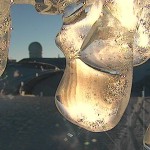
Even more fun! On Christmas Eve I was contacted by Hawaii News Now for photos of the storm, they were eager to do something about a white Christmas for the evening news. As I had not been to the summit and no one on our crew was up, I simply grabbed some MastCam images and forwarded them. The images were aired in the first couple minutes of the Honolulu evening news!
The camera is not available to the public, it would be too much wear and tear to the pan-tilt mechanism and a huge hog of bandwidth. You have to be inside the Keck network to use, from there it is available to anyone on staff. It has proven quite popular, with many folks using the imagery to check on mountain conditions in the latest bad weather.
Next up, yet more cameras in the dome and even a couple on top of the domes. there is also a precipitation sensor and more in the works for the weather station.
OK, enough fun, back to revising the Keck 2 dome schematics.

